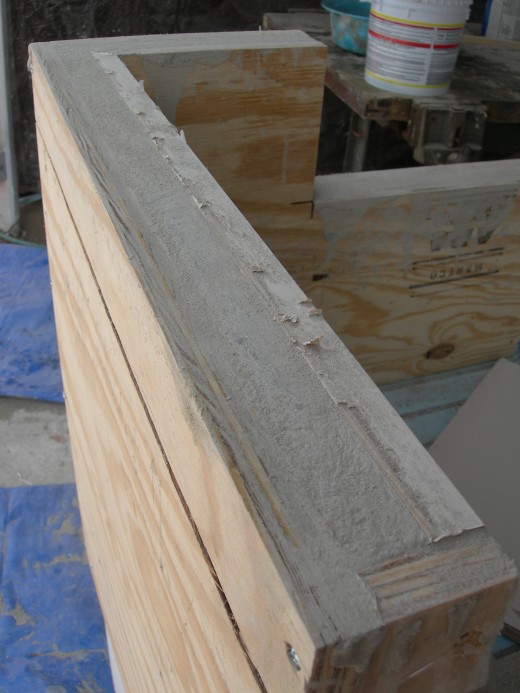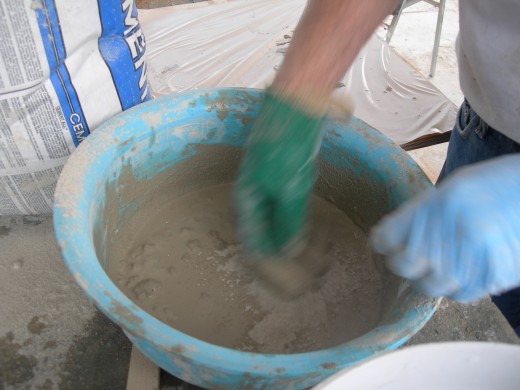What is the Difference between Cement and Concrete?

Cement vs. Concrete
Cement and concrete are common building materials, but the two terms are commonly confused. Cement and concrete are not the same thing. Although to laymen they appear very similar, it will be obvious you don't know what you're talking about if you mix up the terms.
Cement and concrete have been used since Roman times because of their compressive strength. During the Industrial Revolution, their formulations were drastically improved and they became basic building materials with huge structural properties. They are now part of our daily modern life. They are used in roadways, buildings, bridges, and even boats.
Quite simply, the difference between cement and concrete is the presence of aggregate. Aggregate is small particles that are added to the mixture before it is cured. Concrete is cement plus aggregate. Cement never contains aggregate.
What Is Cement?
Cement is a binding agent. It dates back to Roman times when they used burnt lime as cement to mix early concrete. Modern cement comes in a variety of forms, but is generally a mixture of burnt calcium carbonate and clay. There are two types of cement:
Hydraulic
Hydraulic cement hardens independently of the mixture's water content because of a chemical reaction known as hydration. Hydraulic cements can be used underwater. A common example is Portland cement. This is the type of cement used in the construction industry.
Non-hydraulic
Non-hydraulic cements, such as plaster, must stay dry to retain their strength. Non-hydraulic cements are cheaper but they are not as strong and take longer to cure.
What Is Aggregate?
Aggregate is defined simply as small particulate material. Construction aggregate is a very broad term and includes a number of different materials. It ranges from sand to crushed rock, fly ash, and slag. Recycled concrete can also be used as aggregate. Technically any particle can be used as aggregate. I have seen Styrofoam, shredded paper, and shredded cardboard used as an aggregate for lightweight concrete experiments. The aggregate you choose, as well as how much you use, affects the strength of the finished concrete.
What Is Concrete?
Concrete is made from a mixture of cement, aggregate, and water. Varying the quantities and formulations of these ingredients will change the properties of the finished concrete.
Concrete is commonly used for its compressive strength. It makes an excellent material for building projects, including pavement, foundations, buildings, dams, and bridges. However, its tensile capabilities are limited since it will crumble if too much tension is applied to the material. For this reason, rebar (steel reinforced bar) is embedded into the concrete when it is poured.

How to Mix Concrete or Cement
Concrete is fairly simple to make in small batches for small projects. However, there is quite a bit of science required to get particular structural properties. It is best (and legally required) to consult a professional for concrete for structural use. But if you are doing a craft project, you can simply mix your own. Make sure you wear safety gear including gloves, goggles, and a respirator!
The basic recipe:
1 part water
2 parts cement
3 parts aggregate
The method:
- Prepare your mold or form work. Concrete and cement is heavy, so use robust materials that won't break or deform under the weight. As you design your form work keep in mind how you will release final product from the mold after the concrete has cured.
- Consider adding steel mesh or bar to act as rebar. This will make your finished product stronger. Slip it inside your mold. Make sure it does not touch the sides. Otherwise it will show on the surface of finished concrete (and it won't be as strong!).
- Get cement or concrete from your local hardware store. Unless you want a special aggregate for your project, you are better off buying a bag of cement. It eliminates the guesswork from adding the right amount of aggregate. For small projects that need a fine, finished surface consider using cement and skip the aggregate. This will significantly reduce the strength of the finished product, however.
- Add aggregate if needed and mix well.
- Add water while stirring the mixture. It should have the consistency of thick pancake batter. Add more water or dry mix as needed. Note: it is easier to add more water than it is to add cement and aggregate. If you are using a quick-drying formula, you need to move quickly.
- Pour into your form work.
- Allow it to cure. Your concrete (or cement) will be warm due to chemical reactions as long as it is still setting. Keep exposed surfaces of your concrete damp by lightly spraying with water or placing a damp cloth over it. This will prevent cracking.
- Break your mold and you are left with your concrete masterpiece!







